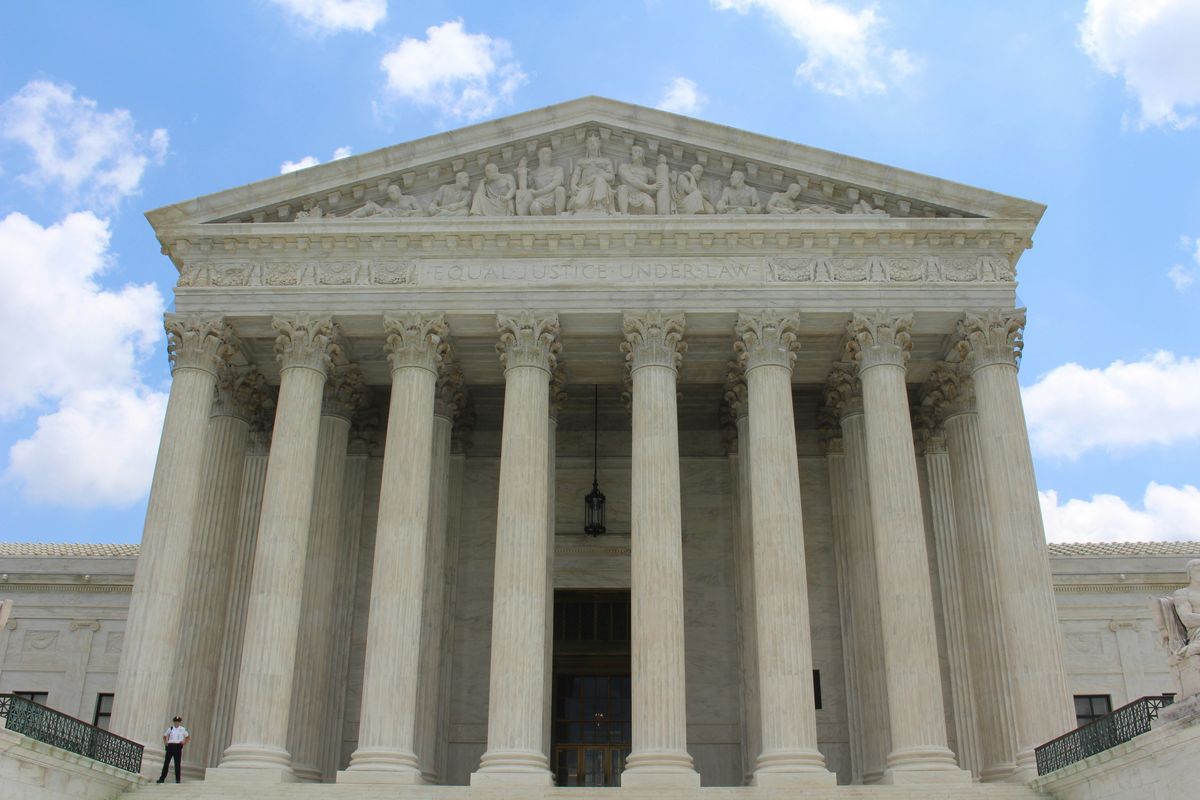In the challenging landscape of B2B legal arbitration, particularly when it comes to non-payment issues, understanding the intricacies of the process is crucial for businesses. This article delves into the arbitration process, the assessment of legal action viability, financial considerations, the decision-making involved in pursuing litigation, and the subsequent steps following litigation outcomes. It aims to provide a comprehensive guide for businesses on how to navigate the complexities of legal disputes and make informed decisions when facing non-payment scenarios.
Key Takeaways
- A thorough investigation of the debtor’s assets and the case facts is essential before deciding on litigation to assess the likelihood of recovery.
- If the probability of recovery is low, it is recommended to close the case, avoiding unnecessary legal expenses and time.
- Should litigation be pursued, businesses must be prepared to cover upfront legal costs, which can range from $600 to $700, depending on jurisdiction.
- Debt collection services have varying fee structures, with rates depending on the age and amount of the claim, and the number of claims submitted.
- Post-litigation, if efforts to collect fail, businesses have the option to continue standard collection activities or close the case with no additional fees owed to the firm or affiliated attorney.
Understanding the B2B Legal Arbitration Process
The Role of Arbitration in Business Disputes
Arbitration serves as a pivotal mechanism for resolving business disputes outside the courtroom. It offers a private, streamlined alternative to traditional litigation, often leading to faster resolutions. The goal is to secure payments and enforce contracts efficiently, minimizing disruptions to ongoing business operations.
- Phase One involves initial contact and persistent communication attempts with the debtor.
- Phase Two escalates the matter to a local attorney, who intensifies the demand for payment.
- Phase Three concludes with a recommendation based on the debtor’s asset investigation and case facts.
In the face of failed negotiations or M&A transactions, arbitration can be a strategic tool for debt recovery and managing legal expenses. It’s essential to understand the financial implications and the likelihood of recovering legal costs before proceeding.
The arbitration process is designed to be cost-effective, but it’s crucial to evaluate the potential for recovery against the upfront legal costs and fees. This assessment will guide businesses in making informed decisions about pursuing litigation.
Key Stages of the Arbitration Procedure
Arbitration is a strategic pathway for resolving B2B disputes, especially when facing client non-payment. The procedure unfolds in distinct phases, each critical to the outcome.
Initiation and Case Presentation: The process kicks off with the filing of a claim and the subsequent presentation of the case. This stage sets the tone for the arbitration, as parties lay out their positions.
Communication is key; expect daily attempts to contact debtors, employing various methods from calls to emails.
Evidence Gathering and Analysis: A thorough investigation into the facts and the debtor’s assets is paramount. This fact-finding mission is where the groundwork for the case is laid.
Decision on Legal Action: The final stage involves a crucial decision based on the likelihood of recovery. If the odds are unfavorable, case closure is recommended. Conversely, if litigation is advised, financial commitments come into play with upfront legal costs.
Each phase is a stepping stone towards either recovery or case closure, with financial considerations and decision-making processes at the forefront.
The Importance of Evidence and Fact-Finding
In B2B legal arbitration, the collection and analysis of evidence is the cornerstone of a strong case. Thorough investigation is critical to understanding the nuances of the dispute and the debtor’s financial standing.
Evidence guides strategic decision-making and supports effective communication with debtors. Without solid evidence, the chances of successful outcomes diminish significantly.
The fact-finding phase is not just about gathering data; it’s about building a compelling narrative for the arbitration panel.
- Review all contractual documents and communication records.
- Conduct a detailed asset investigation of the debtor.
- Analyze the debtor’s payment history and creditworthiness.
Strategies for effective B2B dispute resolutions and collections hinge on the ability to present a well-researched case to the arbitrators. This phase sets the stage for either a strong recommendation for litigation or a prudent decision to close the case.
Assessing the Viability of Legal Action
Investigating the Debtor’s Assets and Case Facts
Before deciding on the pursuit of legal action, a meticulous assessment of the debtor’s financial landscape is crucial. Assess debtor’s assets, income, and financial status to gauge the feasibility of recovery. This investigation is the cornerstone for determining the next steps.
Investigate thoroughly for recovery options, considering all angles to ensure a comprehensive understanding of the debtor’s ability to pay. The outcome of this investigation will significantly influence the decision to litigate or close the case.
The decision to proceed with legal action hinges on the viability of potential recovery.
Understanding the debtor’s financial position involves several key steps:
- Reviewing financial statements and public records
- Analyzing the debtor’s asset liquidity
- Evaluating income streams and business operations
Should the investigation reveal a low likelihood of recovery, the pragmatic approach may be to recommend case closure. Conversely, if there is a reasonable chance to recover the owed funds, litigation could be the next course of action.
Determining the Likelihood of Recovery
Assessing the viability of recovery is a pivotal step in the arbitration process. The debtor’s assets and financial stability are key indicators of whether pursuing litigation is a prudent decision. A structured approach to this assessment includes:
- Reviewing the debtor’s financial history and current status.
- Analyzing the age and size of the debt.
- Considering the debtor’s jurisdiction and associated legal costs.
The goal is to minimize financial risk while maximizing the potential for successful debt recovery.
If the likelihood of recovery is low, a recommendation for case closure may be the most cost-effective route. Conversely, if the assessment suggests a reasonable chance of recovery, proceeding with litigation may be advised, keeping in mind the associated upfront legal costs. The decision ultimately hinges on a careful cost-benefit analysis, factoring in the potential return against the expenses of legal action.
Recommendations for Case Closure or Litigation
At the crossroads of recovery, our firm presents a clear path: closure or litigation. The decision hinges on the feasibility of recovery, assessed through meticulous investigation of the debtor’s assets and case facts.
- Closure: If recovery appears unlikely, we advise to close the case, incurring no further costs.
- Litigation: Should litigation be the chosen route, upfront legal costs await. These typically span $600 to $700, based on jurisdiction.
Our fee structure is straightforward, aligning with the recovery phase and claim specifics. Here’s a snapshot:
| Claims | Under 1 Year | Over 1 Year | Under $1000 | Attorney Placement |
|---|---|---|---|---|
| 1-9 | 30% | 40% | 50% | 50% |
| 10+ | 27% | 35% | 40% | 50% |
In the event of litigation failure, rest assured: you owe nothing further. Our commitment to a three-phase recovery system ensures a tailored approach to each case, with clear communication and contingency planning at every step.
Financial Considerations in Legal Arbitration
Understanding Upfront Legal Costs
Before diving into litigation, it’s crucial to grasp the financial commitment required. Upfront legal costs are the gatekeepers to your pursuit of justice. These costs typically include court fees, filing charges, and may vary depending on the jurisdiction of the debtor.
Initial fees can range from $600 to $700, setting the stage for the legal battle ahead. It’s a financial leap of faith, with the hope of a favorable outcome.
Upfront costs are just the tip of the iceberg. They unlock the door to potential recovery or, conversely, signal the start of a costly endeavor.
Here’s a quick breakdown of potential upfront costs:
- Court costs
- Filing fees
- Attorney retainer fees
Remember, these are preliminary expenses; the total cost of litigation can escalate as the case progresses. Weighing these against the likelihood of debt recovery is essential for a sound financial decision.
Fee Structures for Debt Collection Services
Understanding the fee structures for debt collection services is crucial for businesses considering legal arbitration for non-payment issues. Different agencies offer varied rates, often contingent on the amount recovered or the age of the account. Here’s a breakdown of typical fees:
-
For 1-9 claims:
- Accounts under 1 year: 30% of the amount collected.
- Accounts over 1 year: 40% of the amount collected.
- Accounts under $1000.00: 50% of the amount collected.
- Accounts placed with an attorney: 50% of the amount collected.
-
For 10 or more claims:
- Accounts under 1 year: 27% of the amount collected.
- Accounts over 1 year: 35% of the amount collected.
- Accounts under $1000.00: 40% of the amount collected.
- Accounts placed with an attorney: 50% of the amount collected.
It’s essential to weigh the potential recovery against these fees to determine if pursuing litigation is financially viable. Remember, if litigation is recommended but not pursued, you typically owe nothing.
Evaluating the Cost-Benefit of Litigation
When considering litigation, the balance between potential recovery and expenses is critical. Assess the financial viability before proceeding. Upfront costs, such as court fees, typically range from $600 to $700, depending on jurisdiction. These must be weighed against the likelihood of successful debt recovery.
- Upfront Legal Costs: $600 – $700
- Collection Rates (1-9 claims):
- Under 1 year: 30%
- Over 1 year: 40%
- Under $1000: 50%
- With attorney: 50%
- Collection Rates (10+ claims):
- Under 1 year: 27%
- Over 1 year: 35%
- Under $1000: 40%
- With attorney: 50%
Deciding not to litigate? You can withdraw the claim with no fees owed. Opting for litigation? Prepare for the costs and the risk of unsuccessful attempts.
Consider the collection rates against the age and size of the debt. A higher percentage is charged for older or smaller accounts, reflecting increased difficulty in collection. This strategic evaluation is essential for informed decision-making.
The Decision to Pursue Litigation
Options Upon Litigation Recommendation
Upon receiving a litigation recommendation, you’re at a crossroads. Decide whether to close the case or forge ahead with legal action. If closure is the path chosen, rest easy knowing no fees will be owed for the investigation. Conversely, opting for litigation triggers upfront costs and a commitment to a recovery strategy.
- Closure: No further action; no fees owed.
- Litigation: Upfront costs apply; competitive fee structure kicks in.
Carefully weigh the decision. A detailed evaluation of the debtor’s assets is crucial for a sound strategy. Remember, if litigation doesn’t pan out, the case closes without additional fees.
Our fee structure is designed to align with your success:
- 1-9 claims: 30%-50% of amount collected, based on age and amount.
- 10+ claims: 27%-50% of amount collected, with a lower rate for younger accounts.
The choice is yours, but it’s not to be made lightly. The path of litigation is paved with both potential recoveries and risks.
The Impact of Withdrawing a Claim
Withdrawing a claim can be a strategic move to avoid escalating costs. Deciding to withdraw a claim can save costs but may also mean leaving potential recovery on the table. Litigation comes with upfront legal fees and a structured process that could lead to debt recovery.
- Costs Saved: No further legal fees or court costs.
- Potential Loss: Forfeiture of any chance to recover the debt.
- Flexibility: Option to resume standard collection activities.
Withdrawing is a pivotal decision that balances immediate financial relief against the possibility of future gains.
Remember, the decision to withdraw should be based on a comprehensive assessment of the debtor’s assets, the strength of your case, and the likelihood of recovery. If the prospects are dim, cutting losses early may be the most prudent course of action.
Proceeding with Legal Action and Associated Risks
Choosing to move forward with litigation is a pivotal decision. Costs escalate as court fees and legal expenses accumulate. Initial fees range from $600 to $700, based on the debtor’s location. Commitment to this path means understanding the financial stakes.
- Upfront legal costs are mandatory.
- Attorney fees are contingent on recovery.
- The risk of unsuccessful litigation looms.
Litigation is a gamble with both capital and time. The outcome is never guaranteed, and the process can be lengthy and arduous.
Should litigation fail, the case concludes, and no further fees are owed. This is a critical juncture where weighing the potential for recovery against the certainty of expenses is essential.
Post-Litigation Outcomes and Next Steps
Scenarios Following Unsuccessful Litigation Attempts
When litigation fails to yield the desired outcome, the path forward isn’t the end of the road. Alternative strategies must be considered to mitigate losses and salvage value from the situation.
- Re-evaluation of the debtor’s ability to pay, possibly uncovering hidden assets or changes in financial status.
- Exploration of settlement options that could offer a more favorable resolution than continued legal battles.
- Consideration of a structured payment plan, allowing the debtor to fulfill their obligations over time.
In the wake of unsuccessful litigation, it’s crucial to maintain a pragmatic approach. The focus should shift to realistic recovery options that align with the debtor’s current financial landscape.
While the initial instinct may be to push harder, it’s often more prudent to reassess and adapt. The goal is to secure a viable return on investment, even if it deviates from the original plan.
Continuing Debt Recovery Efforts Beyond the Courtroom
When litigation does not yield the desired outcome, the pursuit of debt recovery must adapt. Alternative strategies become essential in securing payments post-contract enforcement. Our recovery system is designed to navigate the complexities of failed M&A transactions and recover legal costs effectively.
- Phase One: Initial contact and persistent communication.
- Phase Two: Escalation to affiliated attorneys for legal demand.
- Phase Three: Evaluation of recovery likelihood and case closure or litigation recommendation.
The focus shifts to a comprehensive approach, leveraging legal frameworks and financial considerations to enhance the probability of recovery.
The path forward may involve continued standard collection activities, such as calls, emails, and faxes. These efforts are crucial in maintaining pressure on the debtor and can lead to eventual payment without further legal action.
Closure of the Case and Financial Implications
When the gavel falls for the final time, the closure of a B2B legal arbitration case brings with it a series of financial implications. Decisions on closure are driven by a pragmatic assessment of recovery prospects and the financial analysis of the case. If the likelihood of recovery is deemed low, a structured settlement process may be initiated, leading to the final settlement of accounts.
Post-litigation scenarios involve pivoting strategies after unsuccessful attempts. Whether it’s returning to traditional collection methods or considering alternative dispute resolution mechanisms, the focus shifts to minimizing losses and salvaging any possible value from the situation.
The end of litigation does not necessarily mean the end of recovery efforts. It’s a transition point, a moment to reassess and re-strategize.
Financial outcomes vary, but they often include the following considerations:
- Assessment of legal costs incurred versus the amount recovered.
- Potential tax implications of debt write-offs.
- Evaluation of the debtor’s ability to pay in the future.
- Decisions regarding the pursuit of further collection activities.
Navigating the aftermath of litigation can be as challenging as the legal process itself. Understanding the post-litigation outcomes and planning the next steps are crucial for a swift recovery. If you’re seeking expert guidance to manage your post-litigation strategy and ensure the best possible financial recovery, visit Debt Collectors International. Our seasoned professionals are equipped to provide tailored solutions that align with your unique needs. Take action now by exploring our services and let us help you move forward effectively. [Visit our website] for more information and to request a free collection quote.
Frequently Asked Questions
What are the key stages of the B2B legal arbitration process?
The key stages include initial case assessment, pre-arbitration negotiations, selection of arbitrators, exchange of evidence and documents, arbitration hearings, and finally, the arbitrator’s decision and award.
How are the debtor’s assets and case facts investigated?
Debtor’s assets and case facts are investigated through a process called skip-tracing, which gathers financial and contact information, and by making daily attempts to contact the debtor using various communication methods over the first 30 to 60 days.
What are the typical upfront legal costs in B2B legal arbitration?
Upfront legal costs such as court costs and filing fees typically range from $600 to $700, depending on the debtor’s jurisdiction.
What happens if I decide not to proceed with legal action after a litigation recommendation?
If you decide not to proceed with legal action, you can withdraw the claim and owe nothing, or you can choose to continue pursuing the debtor with standard collection activity without incurring additional costs.
What are the fee structures for debt collection services?
Debt collection fees vary based on the age of the account, the amount, and the number of claims. Rates range from 27% to 50% of the amount collected, with specific rates for accounts under a year in age, over a year, under $1000, and those placed with an attorney.
What are my options if attempts to collect via litigation fail?
If attempts to collect via litigation fail, the case will be closed, and you will owe nothing to the firm or the affiliated attorney. You may also consider continuing debt recovery efforts beyond the courtroom or ultimately closing the case.





